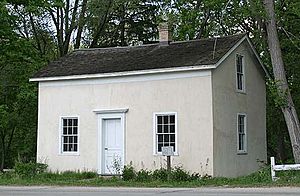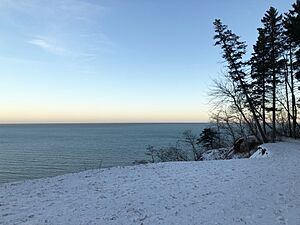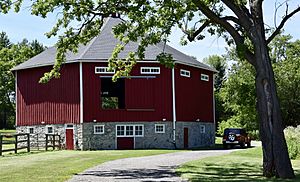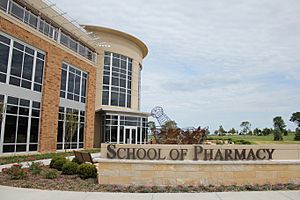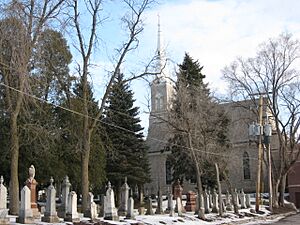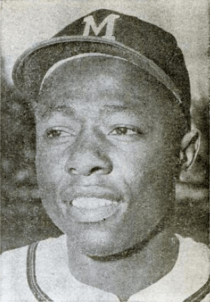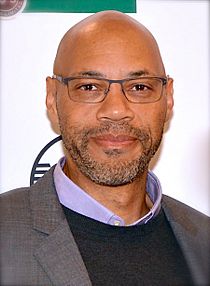Mequon, Wisconsin facts for kids
Quick facts for kids
Mequon, Wisconsin
|
||
|---|---|---|

Mequon City Hall, listed on the National Register of Historic Places
|
||
|
||
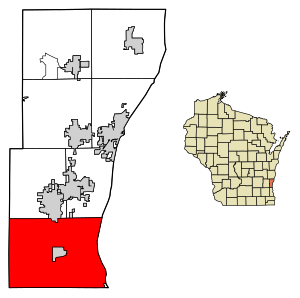
Location of Mequon in Ozaukee County, Wisconsin.
|
||
| Country | United States | |
| State | Wisconsin | |
| County | Ozaukee | |
| Settled | 1830s | |
| Incorporated | 1957 | |
| Government | ||
| • Type | Mayor-council | |
| Area | ||
| • Total | 46.96 sq mi (121.63 km2) | |
| • Land | 46.28 sq mi (119.87 km2) | |
| • Water | 0.68 sq mi (1.76 km2) | |
| Elevation | 669 ft (204 m) | |
| Population
(2020)
|
||
| • Total | 25,142 | |
| • Density | 526.81/sq mi (203.41/km2) | |
| Time zone | UTC−6 (Central (CST)) | |
| • Summer (DST) | UTC−5 (CDT) | |
| ZIP code |
53092 and 53097
|
|
| Area code(s) | 262 | |
| FIPS code | 55-51150 | |
| GNIS feature ID | 1569354 | |
Mequon (pronounced meh-KWAHN) is the biggest city in Ozaukee County, Wisconsin, United States. In 2020, about 25,142 people lived there. It's located on the western shore of Lake Michigan and is part of the Milwaukee metropolitan area. Even though Mequon is one of Wisconsin's largest cities by land area, about half of its land is still undeveloped, with farming being an important part of its economy.
When the first white settlers arrived in the 1830s, the Mequon area was home to the Menominee, Potawatomi, and Sauk people. In the 1840s, German immigrants moved here. They built farms and mills powered by the Milwaukee River. Much of Mequon stayed rural, while Thiensville grew into a market town. Thiensville became a village in 1910. Mequon itself became a city in 1957 to avoid being taken over by the City of Milwaukee. Thiensville is completely surrounded by Mequon, which is why some people call it "Mequon's donut hole." The two places work closely together, sharing a business group, a library, and a school district.
Lutheranism has been very important in Mequon since the early days. Some of the first German settlers were Old Lutherans. They started the Freistadt community in 1839, which is now a part of western Mequon. They also formed Wisconsin's first Lutheran church. Today, Mequon has more Lutheran churches than any other type. It's also home to two private Lutheran colleges: Concordia University Wisconsin and Wisconsin Lutheran Seminary. Mequon also has a notable Jewish community, being the northernmost Milwaukee suburb with a large Jewish population.
Contents
- What's in a Name? The Meaning of Mequon
- Mequon's Past: A Look at Its History
- Mequon's Location and Natural Features
- Mequon's People: Demographics
- Mequon's Economy: How People Make a Living
- Mequon's Culture: Libraries, Museums, and Arts
- Mequon's Schools and Learning Opportunities
- Getting Around: Transportation in Mequon
- Fun and Games: Parks and Recreation
- Mequon's Achievements: Recognition
- Famous People from Mequon
- See also
What's in a Name? The Meaning of Mequon
The name "Mequon" might come from the Ojibwe word "Emikwaan" or "Miguan." This word means "ladle," possibly describing the shape of the river in the area. Another idea is that the name comes from a Menominee word, Mēkon, which means "feather."
Mequon's Past: A Look at Its History
The Mequon area was originally home to Native American tribes. These included the Menominee, Potawatomi, and Sauk people. In the early 1800s, the Potawatomi had a village near what is now Thiensville.
Native American tribes gave up their land to the U.S. government in the 1830s. Many Native people moved west, but some stayed. They were called "strolling Potawatomi" because they continued to live on their old lands. Eventually, those who stayed formed the Forest County Potawatomi Community in northern Wisconsin.
European fur traders and explorers used the Milwaukee River to travel through Mequon. The first white settlers arrived in the mid-1830s. They came from places like New York, England, and Ireland. One of the oldest buildings still standing is the Isham Day House, built in 1839. Germans started arriving in 1839, and by the 1840s, they were the largest group in Mequon.
Freistadt: A Free City's Beginnings
In October 1839, twenty German families settled in western Mequon. They were Old Lutherans who had left Prussia for religious freedom. They named their community Freistadt, which means "Free City" in German.
In 1840, they built a log cabin church. It was named Trinity Lutheran Church and was the first Lutheran church in Wisconsin. The church later became part of the Lutheran Church–Missouri Synod in 1848. A new stone church was built in 1884.
Thiensville: A Growing Market Town
Joachim Heinrich Thien moved to the area in 1842. He helped plan the settlement that would become Thiensville. He built a dam, a canal, a sawmill, and a store. Thien also started the first volunteer fire department in 1857.
Thiensville grew because of the Chicago, Milwaukee & St. Paul Railway. This railway was built in the early 1870s. Thiensville became a busy downtown area with stores and services for farmers. The village of Thiensville officially became a village in 1910.
During World War II, German prisoners of war helped work at local businesses. They filled in for local men who were away fighting. Mequon and Thiensville now share a school district, a business group, and a library.
Mequon Becomes a City
Mequon's population grew a lot after World War II. Between 1950 and 1960, the population more than doubled. This growth meant that other towns, like Milwaukee, might try to take over parts of Mequon. To prevent this, Mequon officially became a city in 1957.
Mequon also has a past where it was not welcoming to all people. For example, in 1954, when famous baseball player Hank Aaron moved his family to Mequon, he faced challenges buying a home directly. He had to have a friend buy it for him.
The city continued to grow when Interstate 43 was built in the mid-1960s. This made it easier to travel to Milwaukee. Even though it's a city, much of Mequon is still rural. Almost half of the land is undeveloped.
Mequon's Location and Natural Features
Mequon is located about 15 miles (24 km) north of Milwaukee. It's part of the Milwaukee metropolitan area. The city covers about 46.28 square miles (119.86 km2) of land. In 2005, Mequon was the third-largest city in Wisconsin by land area. Even with many homes, about half of the city's land is still open or used for farming.
The Village of Thiensville is a small area completely surrounded by Mequon. Mequon is also next to other towns and cities. These include Cedarburg to the north and Lake Michigan to the east.
The city sits on the western shore of Lake Michigan. The coastline has tall clay bluffs that are 80 to 140 feet (24 to 43 meters) high. Streams flow through deep ravines into the lake. These clay bluffs are special and are found in only a few other places in the world. The beaches along the coast have a mix of gravel and sand.
Mequon is in an area shaped by glaciers from the last ice age. The soil is mostly clay with a thin layer of fine silt on top. There are also some limestone deposits. The Milwaukee River and Pigeon Creek flow through the eastern part of the city. Other creeks flow through western Mequon.
Before settlers arrived, Mequon was a forest with many American beech and sugar maple trees. There's also a large swamp along the Little Menomonee River. Much of the original forest was cleared for farming.
As more land is developed, wildlife sometimes comes closer to human areas. You might see white-tailed deer, coyotes, and red foxes in Mequon. Many birds, like chimney swifts and wild turkeys, also live here. The city is home to some rare plants, too.
However, Mequon also faces challenges from invasive species. These are plants and animals that are not native to the area and can harm the local environment. Examples include the emerald ash borer and purple loosestrife.
Mequon's Weather and Climate
Mequon has four clear seasons. Temperatures and rainfall can change a lot throughout the year. July is usually the warmest month, with high temperatures around 81 °F (27 °C). January is the coldest, with highs around 27 °F (−3 °C).
The highest temperature ever recorded in Mequon was 105 °F (41 °C). This happened on July 24, 1935, and again on July 17, 1995. The coldest temperature was −40 °F (−40 °C) on January 17, 1982.
| Climate data for Mequon, Wisconsin | |||||||||||||
|---|---|---|---|---|---|---|---|---|---|---|---|---|---|
| Month | Jan | Feb | Mar | Apr | May | Jun | Jul | Aug | Sep | Oct | Nov | Dec | Year |
| Mean daily maximum °F (°C) | 27 (−3) |
31 (−1) |
42 (6) |
55 (13) |
66 (19) |
76 (24) |
81 (27) |
79 (26) |
72 (22) |
59 (15) |
45 (7) |
31 (−1) |
55 (13) |
| Mean daily minimum °F (°C) | 11 (−12) |
14 (−10) |
24 (−4) |
35 (2) |
44 (7) |
54 (12) |
59 (15) |
57 (14) |
49 (9) |
38 (3) |
28 (−2) |
16 (−9) |
36 (2) |
| Average precipitation inches (mm) | 1.60 (41) |
1.50 (38) |
1.90 (48) |
3.66 (93) |
3.66 (93) |
4.11 (104) |
4.06 (103) |
4.11 (104) |
3.52 (89) |
2.65 (67) |
2.47 (63) |
1.72 (44) |
34.96 (887) |
| Source: The Weather Channel | |||||||||||||
Mequon's People: Demographics
| Historical population | |||
|---|---|---|---|
| Census | Pop. | %± | |
| 1940 | 3,068 | — | |
| 1950 | 4,065 | 32.5% | |
| 1960 | 8,543 | 110.2% | |
| 1970 | 15,150 | 77.3% | |
| 1980 | 16,193 | 6.9% | |
| 1990 | 18,885 | 16.6% | |
| 2000 | 21,823 | 15.6% | |
| 2010 | 23,132 | 6.0% | |
| 2020 | 25,142 | 8.7% | |
| U.S. Decennial Census | |||
In 2010, Mequon had 23,132 people living in 8,598 households. Most households (68.9%) were married couples living together. The average household had 2.56 people.
The average age in Mequon was 45.9 years old. About 23.1% of residents were under 18. Many residents were between 45 and 64 years old (34.1%).
Mequon's Economy: How People Make a Living
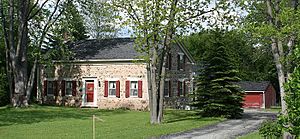
Mequon's economy used to be mostly about farming. Some old farmhouses from the 1840s and 1850s are still standing. The first big businesses were mills powered by the Milwaukee River. Other businesses served local farmers, especially in Thiensville.
In the 1920s, some families started fur farming silver foxes in Mequon. These farms became very successful. By 1937, they were selling 30,000 fox furs each year. After World War II, people's tastes changed, so the farms also started raising mink. Fur sales went down later, and the Mequon farms stopped selling furs in 1985.
In the mid-to-late 1900s, Mequon's economy became more diverse. New stores opened for the growing suburban community. Factories also started operating. In 1983, Concordia University Wisconsin moved its campus to Mequon. In 1994, St. Mary's Hospital Ozaukee opened. These two places are now among the biggest employers in Ozaukee County. Even with new industries, farming is still important, and half of Mequon's land is undeveloped.
| Largest Employers in Mequon, 2015 | |||
|---|---|---|---|
| Rank | Employer | Industry | Employees |
| 1 | Concordia University Wisconsin | College | 500+ |
| 2 | Rockwell Automation | Industrial Technology | 500+ |
| 3 | Ascension Columbia St. Mary's Hospital Ozaukee | Health care | 500+ |
| 4 | Mequon-Thiensville School District | Schools | 250–499 |
| 5 | Dentaquest LLC | Health insurance | 250–499 |
| 6 | Telsmith Inc. | Making construction machines | 250–499 |
| 7 | Roundy's | Grocery store | 100–249 |
| 8 | Hayes Performance Systems | Making brakes | 100–249 |
| 9 | Aurora Health Care | Health care | 100–249 |
| 10 | Newcastle Place | Retirement homes | 100–249 |
Mequon's Culture: Libraries, Museums, and Arts
Libraries: Places to Learn and Read
The Frank L. Weyenberg Library serves Mequon and Thiensville. It has books, movies, and digital resources. It also offers meeting spaces. In 2018, the library loaned out over 300,000 items. It's part of the Monarch Library System, which includes libraries in four counties.
Concordia University Wisconsin has the Rincker Memorial Library. This private library has over 100,000 physical books and many online journals. It also has a special room with rare books from the 15th to 19th centuries. These books are mainly about the history of Lutheranism.
Wisconsin Lutheran Seminary also has a private library. It focuses on religious materials, with over 50,000 print books. Its oldest item is a book from 1487.
Museums: Exploring the Past
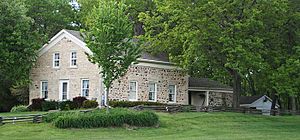
- Jonathan Clark House Museum: This house was built in 1848 by an early settler. It has been restored to show what life was like in Mequon between 1840 and 1860.
- Postal Museum: This museum is in the historic 1839 Isham Day House. It looks like a 19th-century post office and displays a stamp collection. It opened in 2019 and is free to visit.
Performing Arts: Entertainment in Mequon
- Acacia Theatre Company: This Christian theater group performs at Concordia University Wisconsin.
- Marcus North Shore Cinema: This movie theater in Mequon has eleven screens. It also has a bar and restaurant.
Religion: Churches and Communities
Lutheranism has been very important in Mequon since the beginning. In 1840, German immigrants started Trinity Lutheran Church of Freistadt. It was the first Lutheran church in Wisconsin.
Today, Mequon has several Lutheran churches. Some are part of the Wisconsin Evangelical Lutheran Synod (WELS). This group also runs a school and the Wisconsin Lutheran Seminary, which trains pastors. Other Lutheran churches are part of the Lutheran Church–Missouri Synod. This group runs Concordia University Wisconsin.
Mequon also has other Christian churches. These include Presbyterian, Methodist, and Episcopal churches. There are also evangelical Protestant churches and Pentecostal congregations. The Jehovah's Witnesses have a meeting place here too.
Mequon has a notable Jewish community. There are two synagogues: Congregation Anshai Lebowitz (Orthodox) and the Peltz Center for Jewish Life (Chabad). Mequon also has a Jewish retirement community and a grocery store with many kosher options.
A Unitarian Universalist church, Unitarian Church North, is located in northern Mequon.
Mequon's Schools and Learning Opportunities
Mequon's public schools are part of the Mequon-Thiensville School District. A small part of Mequon is served by the Cedarburg School District. The Mequon-Thiensville district has three elementary schools (kindergarten to fifth grade): Donges Bay, Oriole Lane, and Wilson. It also has two middle schools (grades six to eight): Lake Shore and Steffen. Homestead High School serves all students from ninth to twelfth grade. In 2009, BusinessWeek magazine called Homestead the best high school in Wisconsin. Its mascot is a Highlander.
The school district also serves the Village of Thiensville. A seven-member school board runs the district. The current superintendent is Matthew Joynt.
Mequon also has private parochial schools for younger students. These include Christ Alone Lutheran School, Lumen Christi Catholic School, and Trinity Lutheran School.
Milwaukee Area Technical College has a campus in Mequon. It offers over 20 two-year associate degrees. Students can also earn technical diplomas and certificates. This campus can be a first step for students who want to get a bachelor's degree.
Concordia University Wisconsin is a private university in eastern Mequon. It's part of the Lutheran Church–Missouri Synod system. The university has over 7,000 students. It offers more than 70 undergraduate majors and 17 graduate programs. This includes a School of Pharmacy, one of only three in Wisconsin.
Wisconsin Lutheran Seminary is also in Mequon. It's an all-men's school that trains pastors for the Wisconsin Evangelical Lutheran Synod. It has about 125 students.
Getting Around: Transportation in Mequon
Interstate 43 runs through Mequon from north to south. Exits 85, 87, and 89 provide access to the city.
Mequon has some public transportation. Ozaukee County and Milwaukee County run the Route 143 commuter bus. This bus, called the "Ozaukee County Express," goes to Milwaukee. It stops at five places in Mequon during weekday commute times. Ozaukee County Transit Services also offers a Shared Ride Taxi. This taxi service runs seven days a week and connects to other transit systems.
Many parts of Mequon are rural and don't have sidewalks. However, the Ozaukee Interurban Trail is a path for walking and biking. It runs north–south through Mequon. It connects the city to Cedarburg in the north and Brown Deer in the south. In Brown Deer, it connects to Milwaukee County's Oak Leaf Trail. The Ozaukee Interurban Trail used to be a train line that ran from Milwaukee to Sheboygan. The train ran from 1907 to 1948. In the 1990s, the old rail line was turned into the recreational trail we see today.
Two freight train lines also run through Mequon. One is operated by Wisconsin Central Ltd., and the other by Union Pacific Railroad. Mequon does not currently have passenger train service.
Fun and Games: Parks and Recreation
Mequon has over two dozen parks and hundreds of acres of green space. Some are run by the city, and some by the county. The Ozaukee Interurban Trail runs for 5.85 miles (9.41 km) through the city. The Mequon-Thiensville Recreation Department offers classes and programs for kids and adults.
City Parks: Places to Play and Explore
- Garrison's Glen: A 22 acres (8.9 ha) park with a walking trail and canoe launch.
- Grasslyn Nature Preserve: A 15 acres (6.1 ha) nature preserve with a walking trail and prairie.
- Highland Woods: An 85 acres (34 ha) nature preserve with a walking trail and forest.
- Katherine Kearney Carpenter Park: A 35 acres (14 ha) dog walking park with a trail.
- Lemke Park: A 41 acres (17 ha) park with a playground, picnic tables, and sports fields.
- Lilly Lane Nature Preserve: A 12 acres (4.9 ha) nature preserve with a walking trail.
- Little Menomonee Site: A 20 acres (8.1 ha) nature preserve along the Little Menomonee River.
- Mequon Community Park: A 16 acres (6.5 ha) park with a swimming pool, baseball field, and playground. It also connects to the Ozaukee Interurban Trail.
- Mequon Nature Preserve: A large 444 acres (180 ha) nature preserve with trails, education centers, and an observation tower.
- Prinz Site: A 10 acres (4.0 ha) nature preserve.
- River Barn Park: A 37 acres (15 ha) park with sports fields and a playground.
- River Forest Nature Preserve: A 62 acres (25 ha) nature preserve with a walking trail.
- Riverview Park: A 20 acres (8.1 ha) park with a playground, walking trail, and baseball field.
- Rotary Park: A 75 acres (30 ha) park with basketball courts, baseball fields, soccer fields, and fishing ponds. It also has Pukaite Woods with an accessible nature trail.
- Scout Park: A 12 acres (4.9 ha) nature preserve with a walking trail and river access.
- Settlers Park: A 1.2 acres (0.49 ha) historical park with the Isham Day House museum and a walking trail.
- Shoreland Nature Preserve: A 19 acres (7.7 ha) nature preserve with walking trails.
- Swan Road Prairie: A 20 acres (8.1 ha) nature preserve.
- Trinity Creek Wetland Habitat: A 35 acres (14 ha) wetland park with walking trails and an education center.
- Villa Grove Park: A 5 acres (2.0 ha) park with picnic tables and a boat launch.
- Willow Bay Nature Preserve: A 22 acres (8.9 ha) nature preserve.
Ozaukee County Parks: More Outdoor Fun
- Mee-Kwon Park: A county park with a public golf course, sledding hill, and fishing pond.
- Virmond Park: A 63 acres (25 ha) county park on Lake Michigan. It has courts for volleyball and tennis, a baseball field, soccer field, and picnic area.
Ozaukee Washington Land Trust: Protecting Nature
- Donges Bay Gorge: A 23 acres (9.3 ha) nature preserve on Lake Michigan with a beach and trails.
- Fairy Chasm State Natural Area: A 19 acres (7.7 ha) nature preserve around a deep chasm. It has unique plants because of its cool temperatures.
- Spirit Lake: A 155 acres (63 ha) nature preserve with trails. You can see animals like sandhill cranes, turkeys, deer, and bald eagles here.
Mequon's Achievements: Recognition
In 2005, Money (magazine) ranked Mequon 19th among the 100 Best Small Cities in the United States. It was ranked along with Thiensville.
In 2017, Money (magazine) ranked Mequon as the 41st best place to live in the United States.
Famous People from Mequon
- Hank Aaron, famous baseball player
- Ronald D. Asmus, U.S. diplomat
- Anders Bjork, professional ice hockey player
- Mike Dunleavy Jr., professional basketball player
- Ben Gardner, professional football player
- Jack Harbaugh, professional football player and coach
- Shelby Harris, professional football player
- Coby Karl, professional basketball player
- Owen Miller, professional baseball player
- Willy Porter, musician
- John Ridley, screenwriter and director
- Tom Segura, comedian
See also
 In Spanish: Mequon (Wisconsin) para niños
In Spanish: Mequon (Wisconsin) para niños



